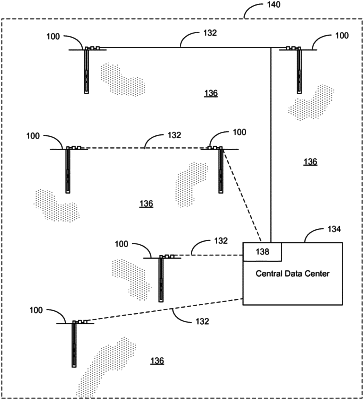| CPC E21B 47/008 (2020.05) [E21B 43/128 (2013.01); F04D 13/10 (2013.01); F04D 15/0088 (2013.01); F05D 2260/821 (2013.01)] | 15 Claims |

|
1. A process for predicting changes in an electric submersible pumping system deployed in a reservoir, the process comprising the steps of:
establishing a reference library of baseline data, wherein the baseline data is representative of electric submersible pumping systems in good working order under a variety of reservoir conditions, wherein the step of establishing a reference library of baseline data further comprises the steps of:
providing an electric submersible pumping system in known good working order,
operating the electric submersible pumping system in a test well under a range of prescribed reservoir conditions that are representative of known reservoir states,
measuring high-frequency time series of parameters for the electric submersible pumping system operating in the test well, and
storing the measurements for each test as health indices, wherein the health indices represent the condition of the electric submersible pumping system;
developing a reservoir state model, wherein the reservoir state model is based at least in part on the baseline data, wherein the step of developing a reservoir state model further comprises calculating a plurality of statistical features on the health indices;
developing an electric submersible pumping system anomaly model, wherein the electric submersible pumping system anomaly model is based at least in part on the baseline data, wherein the step of developing an electric submersible pumping system anomaly model further comprises the steps of:
acquiring the health indices, and
training multivariate mixture distributions on the health indices for pooled data made up of expected reservoir states;
receiving field data from the electric submersible pumping system deployed in the reservoir;
applying the field data to the reservoir state model and electric submersible pumping system anomaly model;
generating an output representative of the likelihood that the reservoir has changed states; and
generating an output representative of the likelihood that the electric submersible pumping system has changed states.
|